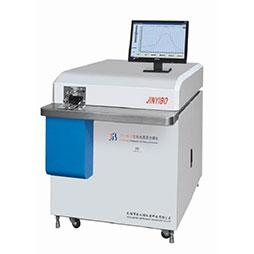

液龙机械
Photoelectric direct reading spectrometer
Photoelectric direct reading spectrometer is a rapid quantitative analysis instrument for analyzing the composition of ferrous and non-ferrous metals. It is widely used in metallurgy, machinery and other industrial sectors. It is one of the effective means to control product quality for online analysis before smelting furnace and product inspection in central laboratory. Can be used for a variety of matrix analysis: Al, Pb, Mg, Zn, Sn, Fe, Co, Ni, TI, Cu, etc., a total of more than 50 elements.
Basic principle: any substance is composed of elements, and elements are composed of atoms, atoms are composed of atomic nuclei and electrons, each electron is at a certain energy level, has a certain energy, in a normal state The atom is in a stable state, its energy is low, this state is called the ground state. When the substance is subjected to the action of external energy (electrical energy and thermal energy), the extranuclear electrons jump to a high energy level, and the electrons in the high energy state (excited state) are unstable, and the excited state atoms can exist for about 10-8 seconds. When transitioning from a high energy state to a ground state, or a lower energy state, the excess energy is released in the form of light.
Features of photoelectric direct reading spectrometer
1. All the core components of the instrument are imported, which improves the stability and reliability of the instrument.
2. The instrument adopts foreign advanced excitation light source technology, and designs a high-energy, highly stable excitation light source to meet the analysis of ultra-high content and trace amounts.
3. The instrument adopts the overall exit slit technology, which is convenient for channel selection and adjustment.
4. The high voltage of the photomultiplier tube of the instrument is directly controlled by the computer, and the software is adjusted to improve the utilization rate of the channel.
5. The instrument is equipped with an automatic constant temperature system, which solves the influence of environmental temperature changes on the optical system.
6. The multi-language operating software and flexible configuration of the instrument make the instrument more humanized.